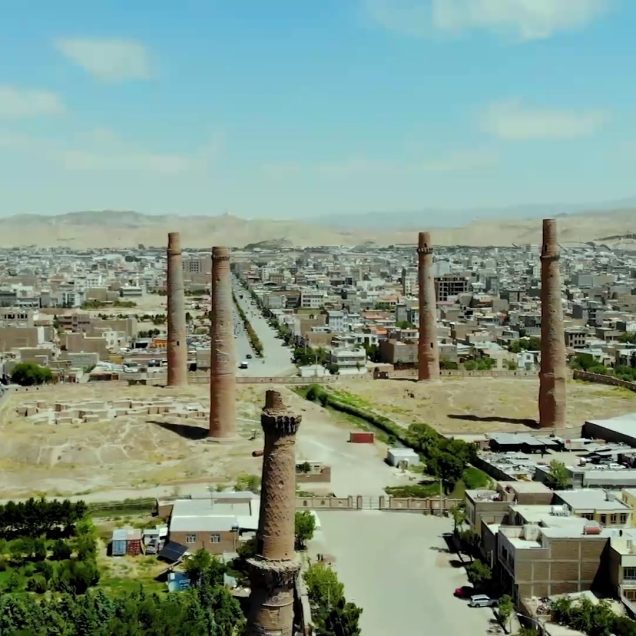This history of Herat has been one of repeated destruction and reconstruction. Conqueror after conqueror, from the time of Alexander the Great, has taken it, destroyed it and then rebuilt it. In the 4 th Century B.C. Alexander the Great built the fort which is still standing in the center of the City. From 1040 to 1175 the city was ruled by the Seljuks who defeated the Ghaznavids and destroyed the fortress. Herat was then captured by the Ghorids until the city fell under the control of the Khwarazm Empire. In 1221, Herat was taken by the Mongols and Tuli, the son of Genghis Khan, who ruled for a time, but the citizens revolted and killed the Mongol garrison chief. Extremely angered, Genghis Khan rode upon the city with 80, 000 troops and besieged it for six months, leaving only forty people living. In 1245, Herat was given to the Kart Maliks. Tamerlane destroyed Herat in 1381. However, his son, ShahRukh, rebuilt it and started the cultural renaissance which made it the center of learning and culture. During the Timurid rule, the famous poet of Herat, Jami and the miniaturist, Behzad were born, Queen Gawhar Shad’s Musalla was built and Gazergah restored. For the second time in its history, the city flourished. In 1718 the Afghan clan Chief Hotaki, struggled for Herat’s independence which continued until 1880, when finally the city became an integral part of Afghanistan.
Herat the Pearl of Khorasan
Tour details
- Location Western Afghanistan
- Time Zone UTC+4:30
- Elevation 925m
- Climate BSK
- Total Area 182 Km2
- Population (2023 695,000
- Main Ethnic Group Tajik
- Language Persian
- Popular Food Kichri and Qorme Sabzi
- Hotels We Use Estiqlal, Sadaf



